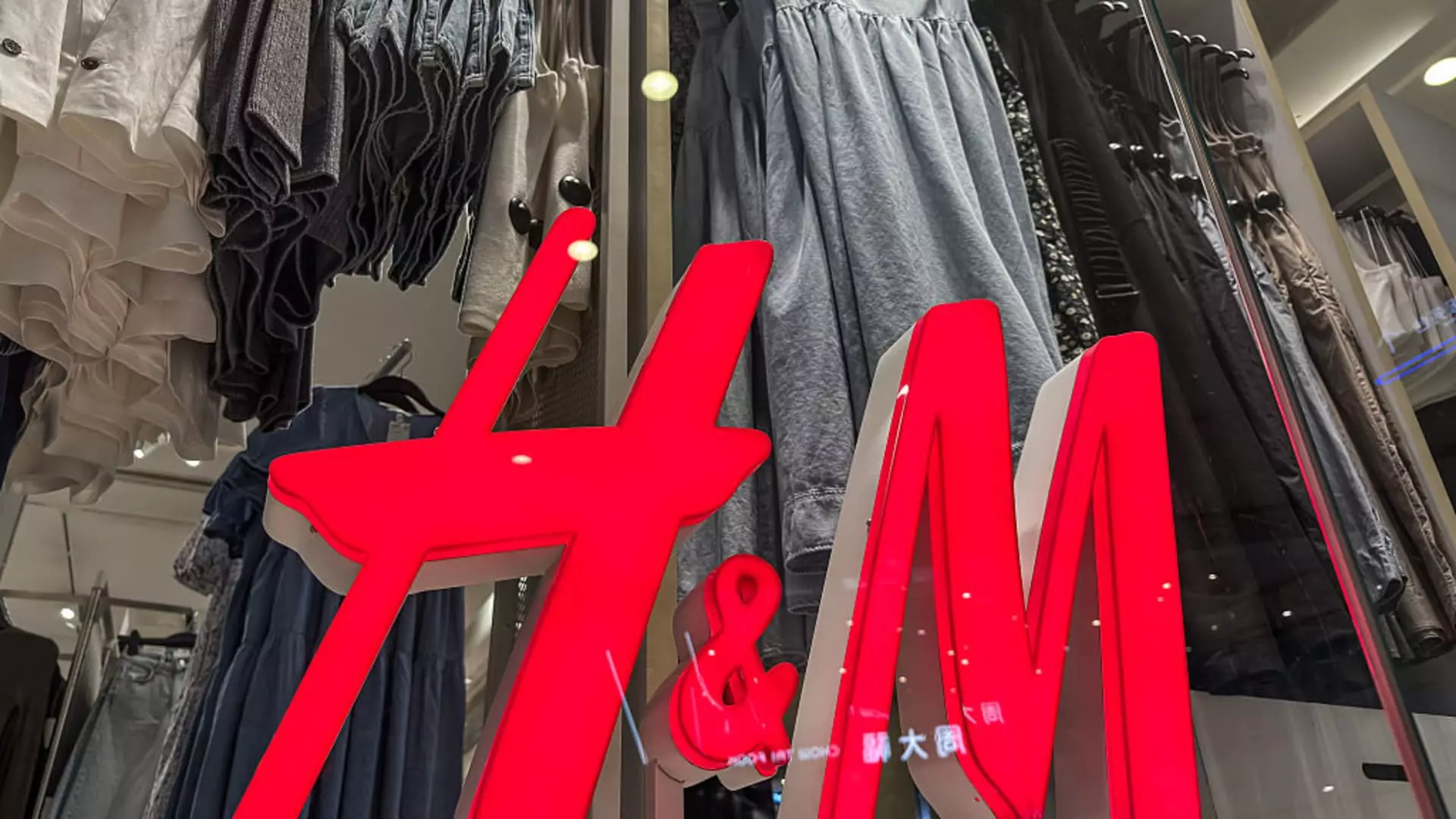After a period of sluggish performance, Swedish retail titan H&M has reported an anticipated rise in demand. On Thursday, the company announced a modest sales increase of 3% for June, a figure that, while encouraging, follows a lackluster first half of the year. The news propelled H&M’s shares up by 3.85% during early trading hours, a small morale booster for an organization grappling with stagnant sales and increasingly volatile market conditions.
However, beneath this flicker of optimism lies a more daunting reality: consumers are navigating uncertain economic waters, leading them to become painfully price-sensitive. For a company that has, until now, positioned itself as an accessible fast-fashion retailer, this growing caution should be a stark warning. H&M appears to be ignoring the persistent shifts in consumer behavior and the harsh economic landscape that has rendered shoppers more discerning about their purchases.
Trade Tariffs and Their Hidden Costs
Amid ongoing chaos in global trade, CEO Daniel Erver has hinted at a potential price hike to navigate the impact of U.S. trade tariffs. While these decisions could momentarily safeguard profit margins, they also risk alienating a customer base that is already feeling the financial squeeze. H&M’s dependence on Asian production, particularly in China and Bangladesh, further complicates its strategy. As the company considers raising prices in response to rising costs, it fails to recognize that increased prices could catalyze shifts in consumer loyalty towards other brands that offer more competitive pricing.
The reluctance to disclose specific impacts of tariffs further reveals a certain level of complacency. H&M is keeping an eye on the competition, and while that’s essential, it may be more critical to develop a proactive approach to these challenges rather than merely reacting to them. It raises the question: will H&M adapt in time to ward off the looming threat to its market share, especially from competitors like Zara, Shein, and Temu?
Adapting the Supply Chain: An Opportunity Missed?
H&M has claimed that it possesses the flexibility in its supply chain to adapt to the evolving conditions. Yet, the fact that it only seems to be acknowledging market changes now, after several years of steady decline relative to its rivals, is alarming. The assertion suggests a certain level of reactive rather than proactive planning. As external factors begin to shift in H&M’s favor, such as the declining purchasing costs, one wonders whether the company will take this as a golden opportunity to reevaluate its core strategies, or if they will fall prey to the comfort of having weathered earlier storms.
The planned closures of 200 stores, juxtaposed with 80 new openings in growth markets, is a double-edged sword. It shows H&M’s attempt to streamline operations while penetrating emerging markets, but it also signals a retreat from established locales where brand loyalty once prevailed. Is H&M retreating rather than innovating? The retail space is not merely about having a presence; it is about crafting a narrative that resonates with the consumers of today, who seek authenticity, sustainability, and value for their dollar.
The Competition Heats Up
Facing a rapidly changing landscape, H&M must contend not only with the likes of Zara but also with the onslaught of new competitors that thrive on ultra-low prices. With retail rivals like Shein and Temu capitalizing on cost-effective production and aggressive marketing strategies, is H&M prepared for the reality that it may no longer be the go-to retailer it once was? The company’s admission of consecutive quarters of lackluster sales raises more than a few eyebrows. In this economic climate wherein consumer confidence is fragile, H&M’s hesitance to embrace a radical transformation could lead to disinterest and, ultimately, diminished market share.
Overall, the landscape H&M finds itself in today requires not just band-aid solutions but a deep reassessment of its core values and market positioning. As forces in the retail sector shift and evolve, the time for introspection and meaningful change is now. Otherwise, H&M may find itself adrift in a sea of competition, outmaneuvered and outpaced by the very nimble rivals it once overlooked.

